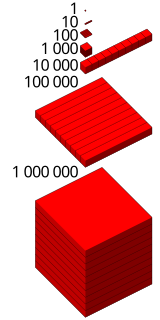Related Research Articles
222 is the natural number following 221 and preceding 223.
68 (sixty-eight) is the natural number following 67 and preceding 69. It is an even number.
1000 or one thousand is the natural number following 999 and preceding 1001. In most English-speaking countries, it can be written with or without a comma or sometimes a period separating the thousands digit: 1,000.
300 is the natural number following 299 and preceding 301.
400 is the natural number following 399 and preceding 401.
500 is the natural number following 499 and preceding 501.
700 is the natural number following 699 and preceding 701.
600 is the natural number following 599 and preceding 601.
800 is the natural number following 799 and preceding 801.
900 is the natural number following 899 and preceding 901. It is the square of 30 and the sum of Euler's totient function for the first 54 positive integers. In base 10 it is a Harshad number.
2000 is a natural number following 1999 and preceding 2001.
126 is the natural number following 125 and preceding 127.

One million (1,000,000), or one thousand thousand, is the natural number following 999,999 and preceding 1,000,001. The word is derived from the early Italian millione, from mille, "thousand", plus the augmentative suffix -one.

1,000,000,000 is the natural number following 999,999,999 and preceding 1,000,000,001. With a number, "billion" can be abbreviated as b, bil or bn.
100,000 (one hundred thousand) is the natural number following 99,999 and preceding 100,001. In scientific notation, it is written as 105.
10,000,000 is the natural number following 9,999,999 and preceding 10,000,001.
277 is the natural number following 276 and preceding 278.
204 is the natural number following 203 and preceding 205.
252 is the natural number following 251 and preceding 253.
219 is the natural number following 218 and preceding 220.
References
- ↑ Sloane, N. J. A. (ed.). "SequenceA007504(Sum of first n primes)". The On-Line Encyclopedia of Integer Sequences . OEIS Foundation.
- ↑ Sloane, N. J. A. (ed.). "SequenceA051894(Number of monic polynomials with integer coefficients of degree n with all roots in unit disc)". The On-Line Encyclopedia of Integer Sequences . OEIS Foundation.
- ↑ Sloane, N. J. A. (ed.). "SequenceA000247(2^n-n-2)". The On-Line Encyclopedia of Integer Sequences . OEIS Foundation.
- ↑ Sloane, N. J. A. (ed.). "SequenceA000262(Number of "sets of lists": number of partitions of {1,..,n} into any number of lists, where a list means an ordered subset)". The On-Line Encyclopedia of Integer Sequences . OEIS Foundation.
- ↑ Sloane, N. J. A. (ed.). "SequenceA069038(G.f.: x*(1+x)^4/(1-x)^6)". The On-Line Encyclopedia of Integer Sequences . OEIS Foundation.
- ↑ Wolfson, Elliot R. (1997), Through a Speculum That Shines: Vision and Imagination in Medieval Jewish Mysticism, Princeton University Press, p. 222, ISBN 978-0-691-01722-8 .
- ↑ Vance, Andrea; Ensor, Blair; McGregor, Iain (2019). "Product of Australia". Stuff.
The deportees are known as 501s, named after the character section of the Australian Migration Act that allows the cancellation of their visa